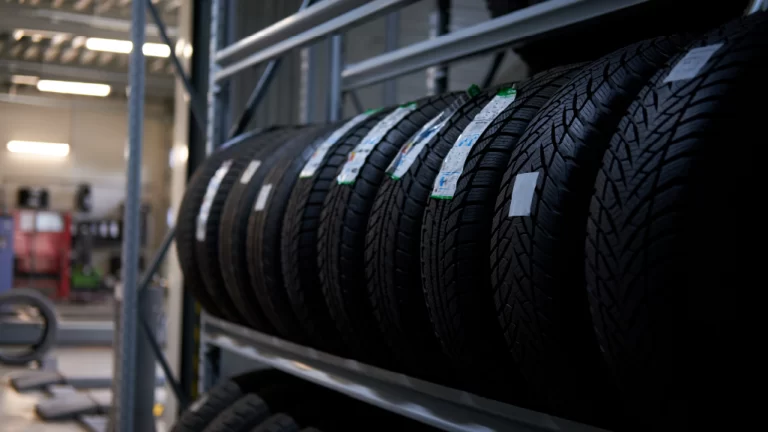In tire manufacturing, every component plays a specific role that contributes to the safety, performance, and durability of the product. One of these essential elements, though often unknown to the end consumer, is the chafer. This fabric, strategically placed within the tire’s structure, plays a key role in protecting against wear and extending the tire’s lifespan.
In this article, we’ll explore what the chafer, its function within the tire and why it’s a critical component in the rubber industry. We’ll also take a look at the technical fabrics most commonly used to make it, and how each one provides unique properties of strength and durability.
Additionally, we’ll discuss the role of innovation in the Mobiltechwhich specializes in technical textiles for the automotive and transportation industries, and how their technological advancements deliver high-performance solutions to optimize this reinforcement.
What is the chafer in a tire?
The chafer is a reinforcing fabric located in the bead area of the tire— the part that makes direct contact with the rim. Its main function is to protect the tire from friction and wear caused by continuous rubbing against the rim during mounting, dismounting, and use.
This component acts as a barrier between the tire structure and the rim, preventing structural damage that could compromise safety and performance. It also helps reinforce the bead area, enhancing stability and preventing deformation caused by inflation pressure or heavy loads.
Main functions of the chafer
- Wear protection
Prevents friction with the rim from damaging the tire’s internal structure, reducing the risk of premature failure. - Structural reinforcement
Adds rigidity and stability to the bead area, ensuring the tire maintains its shape and proper fit to the rim. - Durability enhancement
Reduces fatigue and wear, extending the tire’s overall lifespan. - Safety
A well-designed chafer helps prevent air leaks or bead displacement that could compromise handling. - Ease of mounting and dismounting
This reinforcement minimizes damage during tire changes.
Why the chafer is so important in the rubber industry
In the rubber industry, and particularly in tire manufacturing, the chafer is a relatively low-cost component that has a massive impact on the quality of the final product.
A tire without a high-quality chafer is more vulnerable to friction damage, fatigue, and wear, leading to warranty claims, safety risks, and a shorter product lifespan.
In demanding applications, such as cargo transportation, agricultural machinery, or high-performance vehicles, a durable chafer can mean the difference between a tire that lasts for thousands of miles and one that fails prematurely.
Technical fabrics for chafer
The performance of the chafer is directly linked to the technical fabrics used to produce it. These materials are engineered not for aesthetics but for their mechanical, thermal, and chemical properties.
To ensure durability and performance, chafers are made with high-strength materials developed to meet the most demanding reinforcement requirements.
Technical characteristics of chafer fabrics
- High-tenacity fibers
Typically Nylon (Polyamide) 6.0, 6.6, or Polyester, offering excellent tensile strength, flexibility, and durability. - Types of yarn
Monofilament or multifilament, depending on the required rigidity or flexibility. - Twisted or textured yarns
Twisted yarns deliver greater structural strength, while textured yarns enhance flexibility and adhesion to rubber. - Varied weights
Ranging from 100 to 350 g/m², adaptable to both lightweight and heavy-duty tires. - RFL treatment
Fabrics may be treated with RFL (Resorcinol-Formaldehyde-Latex) to improve bonding with rubber compounds like NR (natural rubber), SBR, or NBR. - Widths
Up to 188 cm (74 inches) to meet different production needs. - Available weaves
Twill, plain weave (1:1, 2:1, 2:2, 3:1), and Oxford, each offering unique mechanical properties. - Advanced fiber options
Can also be manufactured with aramid fibers for maximum strength applications.
Types of fibers used in the chafer
Nylon (Polyamide) 6.0 and 6.6
- High tensile strength.
- Excellent elasticity to absorb impacts.
- Strong resistance to wear and flex fatigue.
- Widely used in heavy-duty and agricultural tires.
Poliéster
- Excellent dimensional stability.
- Lower moisture absorption compared to nylon.
- Ideal for applications where minimal stretch is required.
Aramid
- Exceptional strength with minimal elongation.
- High thermal resistance.
- Commonly used in high-performance or extreme-condition tires.
Chafer integration process in tires
- Fabric production
The fabric is woven to meet specific technical requirements (weight, fiber type, weave). - Surface treatment
RFL is applied to enhance bonding with rubber. - Calendering
The fabric is coated with rubber to create an integrated layer. - Assembly
The chafer is positioned in the bead area of the tire before vulcanization. - Vulcanization
Heat and pressure secure the chafer within the tire structure.
Additional applications of chafer-type fabrics
Although best known for their role in tires, reinforcement fabrics like those used in chafers are also applied in:
- Industrial hoses
- Diaphragms
- Service liners and tarps
- Service liners and tarps
- Tire retreading
- Conveyor belts and industrial tapes
This versatility demonstrates the importance of these materials across multiple industrial sectors.
Innovation and sustainability in chafer fabrics
The tire industry is moving toward lighter, stronger, and more sustainable materials. This includes the use of recycled fibers, more efficient manufacturing processes, and eco-friendly treatments that minimize environmental impact without sacrificing performance.
Within the Mobiltech sector, fabrics are being developed with a focus on efficiency and customization, tailoring every specification to the needs of each application.
The chafer is far more than a simple reinforcement: it’s an essential element to ensure the safety, durability, and performance of a tire. Manufacturing it with high-tenacity technical fabrics, such as nylon, polyester, or aramid, ensures it can withstand the toughest conditions and extend the tire’s lifespan.
Thanks to innovation, today’s chafers can be custom-designed with advanced adhesion treatments and fiber options adapted to any type of tire or industrial application.
Investing in a quality chafer is not just a technical decision, it’s a strategic move to optimize costs, improve quality, and guarantee safety in every vehicle.



